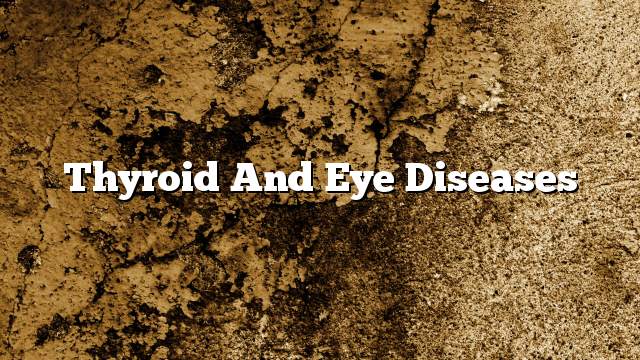What is thyroid gland?
The thyroid gland is located in the frontal area of the neck either trachea. It is similar in shape to the butterfly. The thyroid gland secrete hormones that are responsible for many vital functions in the body.
Who are the most likely to have an eye injury in thyroid disease?
All age groups are at risk of being infected, ‘but the most vulnerable are the 40-50 age group, and the female-to-male ratio is three to one
What are the causes of eye injury in thyroid diseases?
They are often caused by immune causes, where the body produces abnormal antibodies that attack the eye tissue and tissues around it
What are the symptoms of the eye?
The main cause of these symptoms is swelling or bulging of the tissues and muscles behind the eyeball, which in turn leads to protrusion or protrusion of the eyes leading to:
- Continuous eye dilation
- The feeling of strange grains in the eye like grains of sand
- Excessive sensitivity to light
In severe cases:
- Ulceration in the cornea
- Double vision
- Limited eye movement
- Dizziness in the eye and poor vision
When these symptoms occur:
Eye problems usually occur within 6 months before or after the diagnosis of thyroid disease. The most important of these diseases is an increase in the secretion of the gland
Hypothyroidism rarely occurs (Gravesdisesa)
Most cases involve both eyes
what are the treatments ways ?
- It is important to diagnose thyroid disease early and to control it with medication and surgical interventions
- Use a drop of artificial tears during the day, and a generation of the eye during the night to prevent dry eye
- In severe cases, the doctor may prescribe some types of cortisone to reduce swelling and swelling behind the eye
The patient should follow the simple guidelines, namely:
- Use cold compresses on the eye
- Wear sun glasses to prevent sunlight during the day
- Use a high pillow for the head during sleep so that the head level is higher than the rest of the body
- Intervene surgically to relieve severe eye bites
